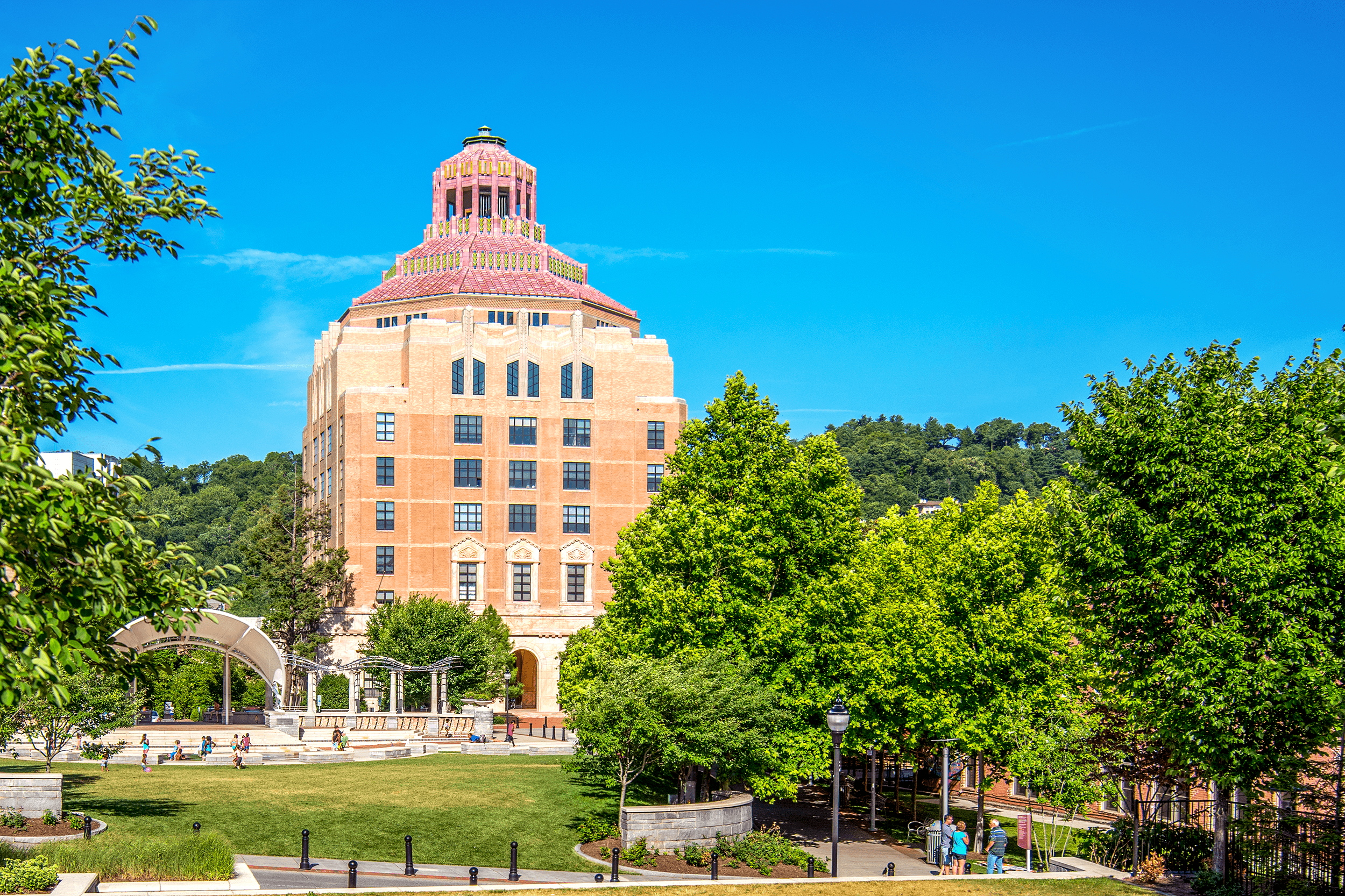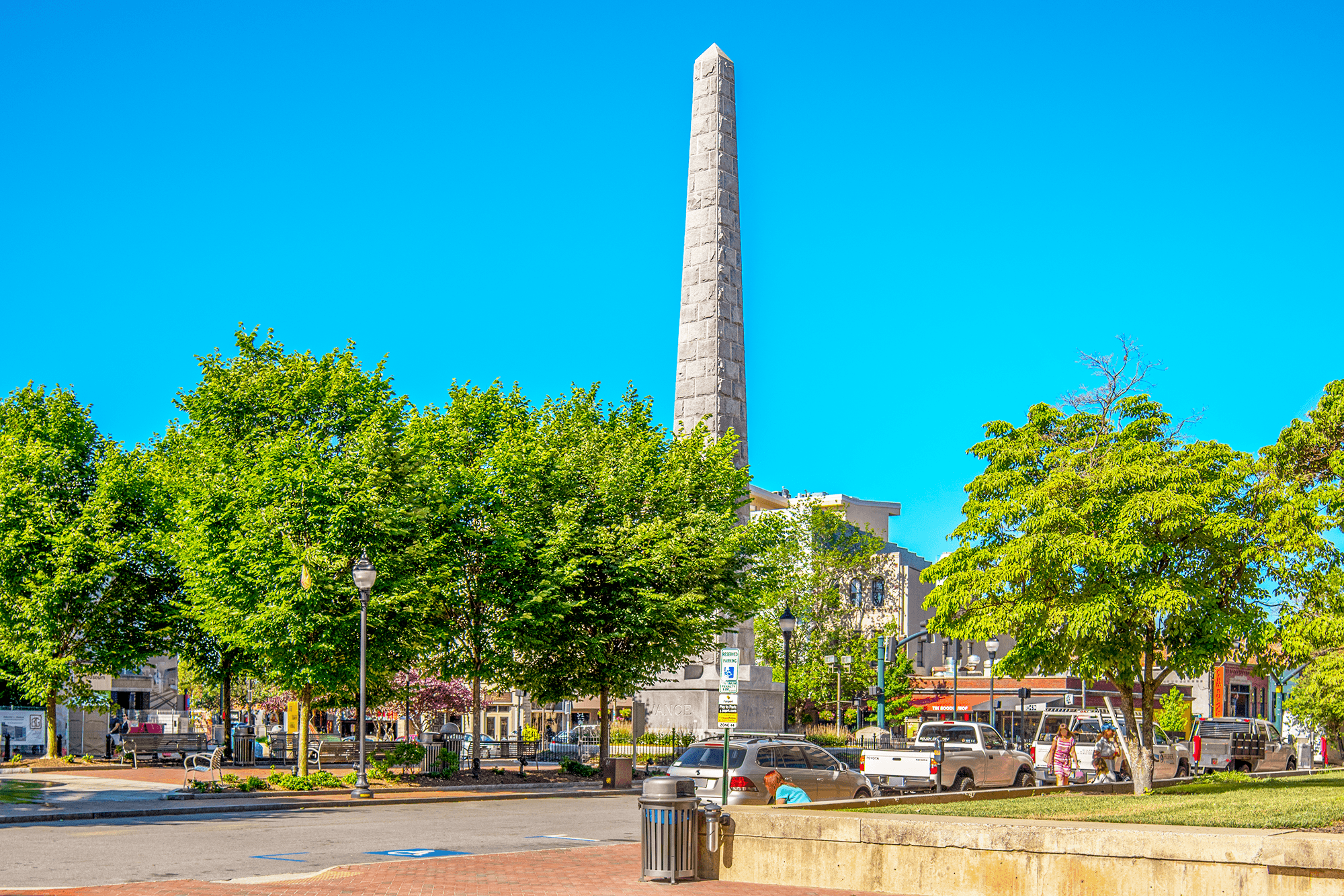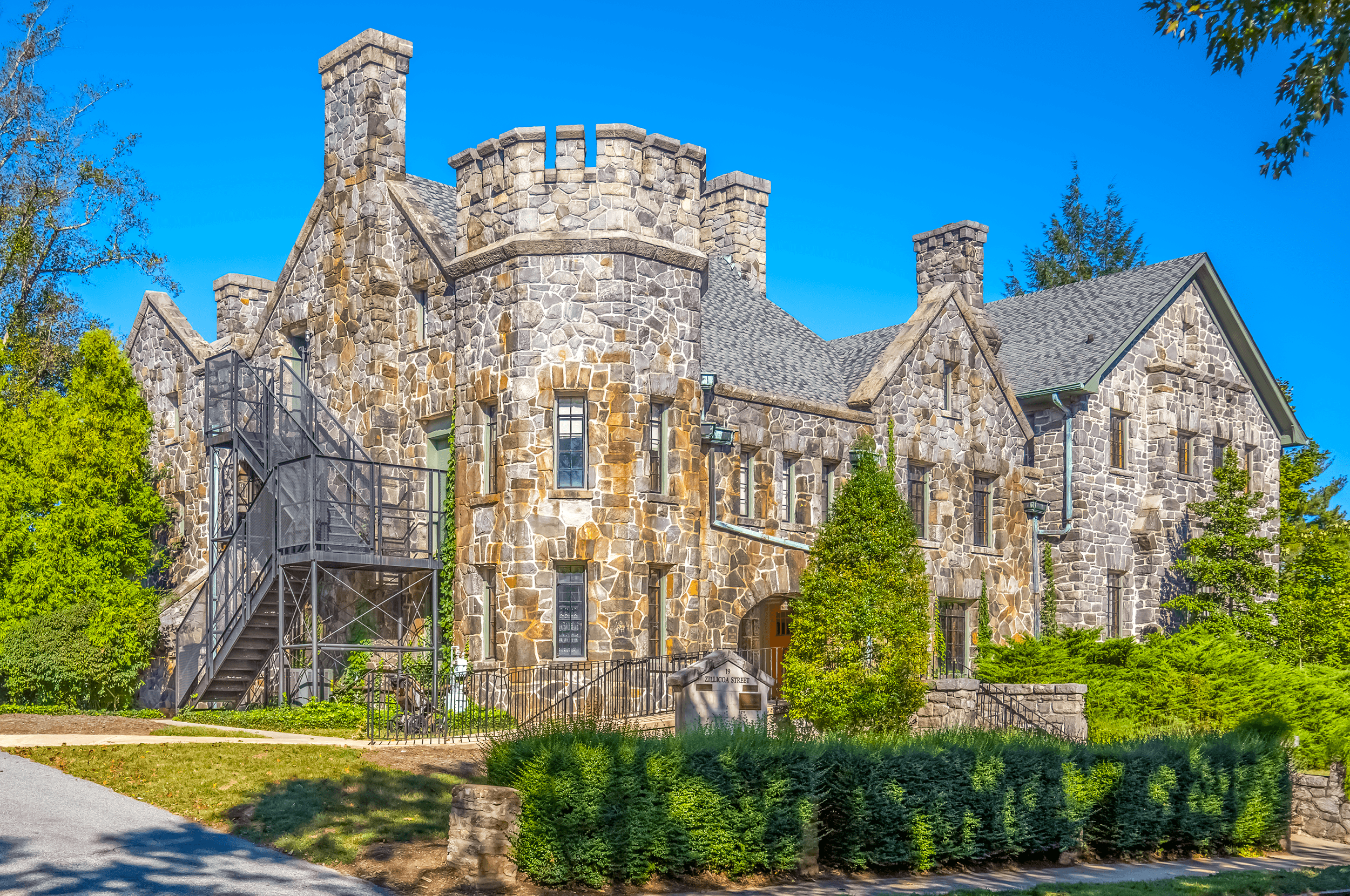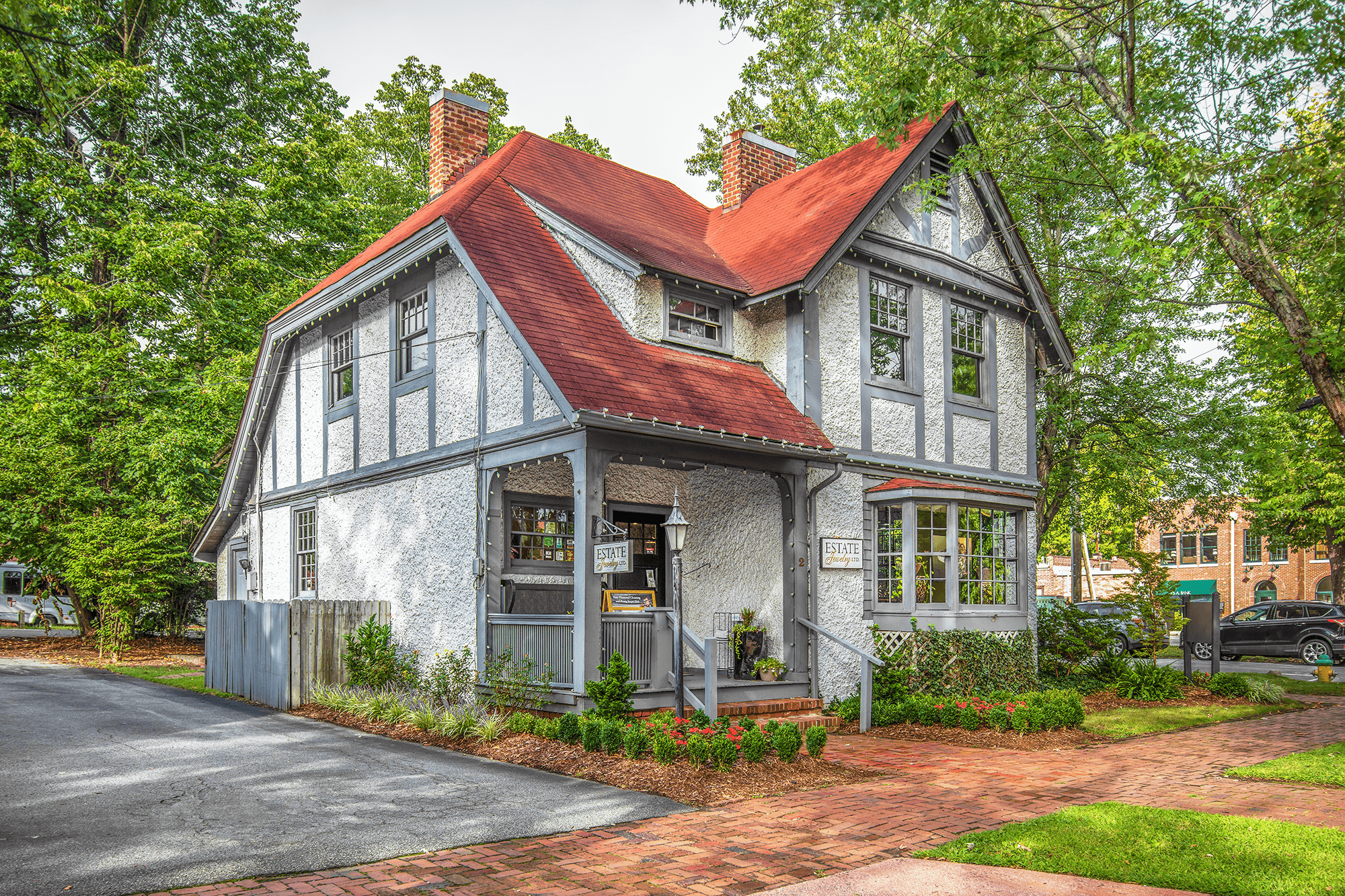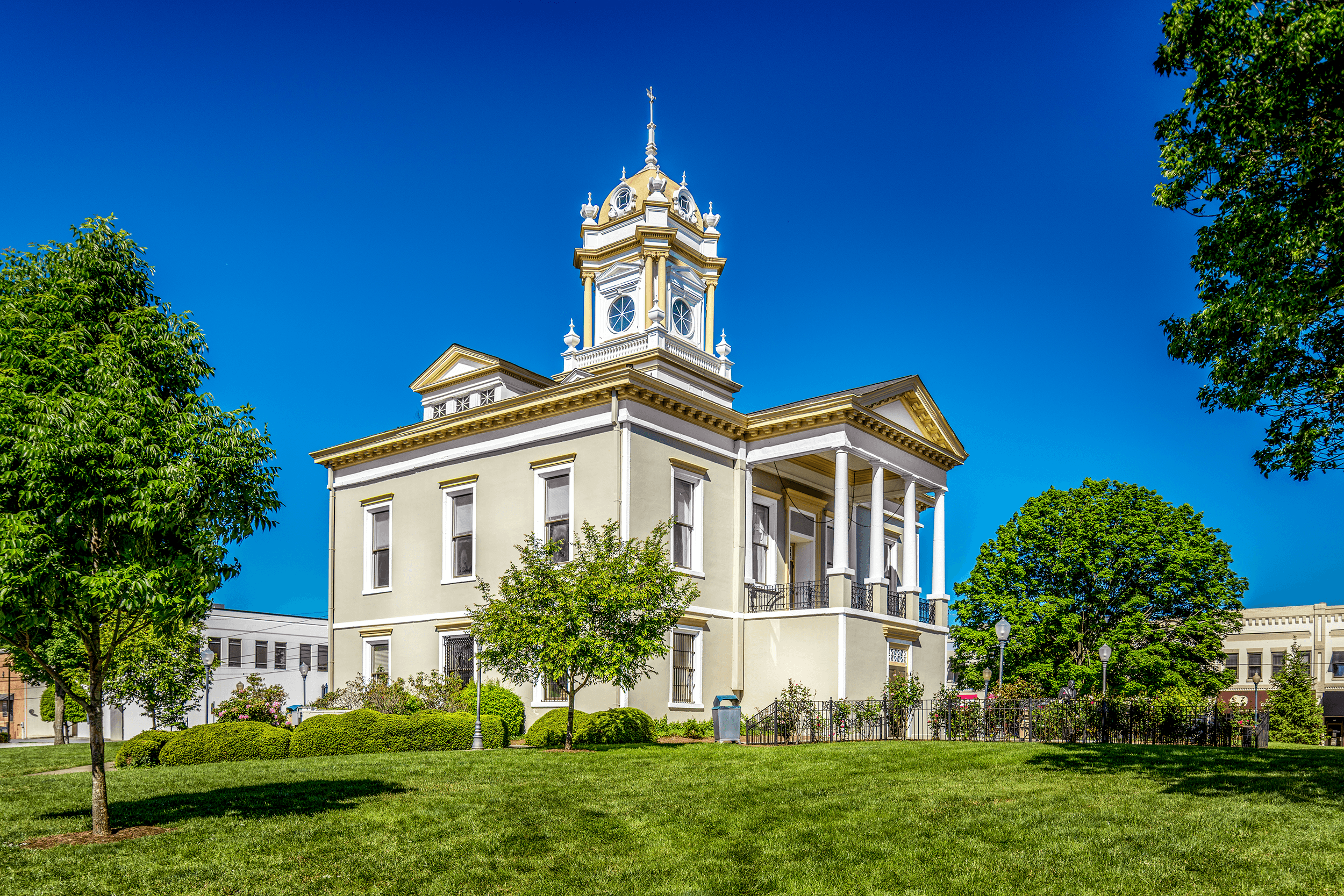Historic Battery Park Hotel

Updated: April 2019
A Visible Landmark With a Touching History
Fourteen stories high the former Battery Park Hotel is undoubtedly one of Asheville’s most visible landmarks and a symbol of Asheville’s rapid development during the building boom in the 1920s. However, today the Battery Park Hotel is no longer a hotel, nor the initially built structure.
From a Romantic Retreat ...
Due to its pure mountain air, Asheville was always known among tuberculosis patients as a place to cure this terrible disease. However, with the arrival of the railroad in 1880, tourists increasingly came to Asheville. Among those visitors were Colonel Franklin Coxe (grandson of cotton industrialist Tench Coxe from Philadelphia), who himself was a successful banker and entrepreneur. Soon he recognized the need for higher-end accommodation to attract more wealthy out-of-state visitors. Following this idea, he purchased the 80-feet high Battery Parker Hill in Asheville, which was named after a Confederate officer with the name Parker, who had placed a cannon battery on the hill to defend Asheville against Union troops in the American Civil War of 1861 to 1865.
Edward Hazlehurst (1853-1915) designed the first Battery Park Hotel, which was completed in 1886. It was magnificent in all possible aspects catering to the most demanding tastes of those days. The Queen Anne style wooden Battery Park Hotel was romantically situated on top of a hill surrounded by 25 acres. According to descriptions of that time it featured sunrooms, ballrooms, dining halls, tennis courts and an electric elevator – a rarity in those days. Each room had a fireplace, modern steam radiator and electric light, which Thomas Edison made possible through his invention of the light bulb just seven years earlier in 1879. It is said that from the porches of the Battery Park Hotel George Vanderbilt, who built Biltmore Estate, “first gazed out upon the misty stretch of towering mountain peaks and resolved to make his home in the Land of the Sky.”
When Colonel Franklin Coxe died in 1903, Edwin Grove, the builder of → The Grove Park Inn (1913), purchased the property in 1920. Together with his son-in-law Fred Seely, Edwin Grove had the vision to transform Asheville from a mountain town for tuberculosis patients to a popular tourist destination.
... To Modern Hotel
Soon after the purchase, the first Battery Park Hotel burned down, which in turn made room for Edwin Grove’s ambitious and massive earth-moving project. He had the hill leveled by hauling away 250,000 to 500,000 cubic yards of earth. The excavation took 21 months and was completed in 1924 leaving a gently sloped area behind.
While the excavation was still ongoing, the new fourteen-story Battery Park Hotel was built, which opened in September 1924.
But not everybody was pleased with the new construction. None other than Asheville native Thomas Wolfe, famous author of Look Homeward, Angel (The Thomas Wolfe Memorial), mourned over the “beautiful green hill, opulent with rich lawns and lordly trees, with beds of flowers and banks of honeysuckle, and on top of it there had been an immense, rambling, old wooden hotel”, which “now was gone”. He described the new structure as “being stamped out of the same mold, as if by some gigantic biscuit-cutter of hotels that had produced a thousand others like it all over the country.”
The architect of the new Battery Park Hotel was William Lee Stoddart (1868-1940), who was well known for his large hotel designs. William Stoddart also built the Bon Marché Department Store (today → Haywood Park Hotel) for Edwin Grove, which opened around the same time in 1924, and the George Vanderbilt Hotel.
Made of reinforced concrete with brick, limestone and terra cotta “with notes of Neo-Classic elegance and Spanish romanticism,” the new Battery Park Hotel was a modern building, which sported the “very latest in convenience and modernity.” According to the Southern Tourist of 1924, the lobby was spacious and equipped with comfortable North Carolina made furniture. Each of the 220 rooms had a private bath and twin beds. The main kitchen was electrical to serve a large number of guests. The list of amenities continued with a roof garden, a roof dining room seating around 150 guests and a roof lounge, which opened to mountain view terraces.
Edwin Grove’s other project, the Grove Arcade, began construction in 1926 and opened in 1929.
The Battery Park Hotel remained open until 1972 when it was closed due to high maintenance costs. In 1977, the Battery Park Hotel was added to the National Register of Historic Places. In the 1980s the Asheville Housing Authority took over the building and converted it into apartments for senior citizens. Today, it is owned by National Church Residences. On the first floor are businesses such as the → Asheville Pinball Museum. The floors above are private apartments.
1 Battle Square, Asheville, NC 28801
All day.
All year.
STREET VIEWING ONLY.
Private property.
Wall Street Parking Garage.
Civic Center Parking Garage.
Rankin Parking Garage.
Public bus stop: Haywood St at US Cellular Center.
Stop Gray Line Historic Trolley: Grove Arcade.

